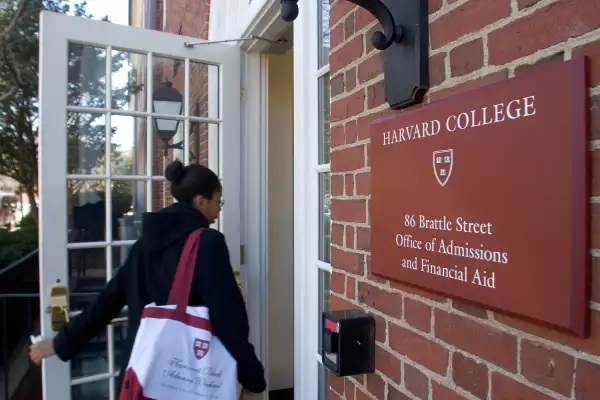College Board Says Tuition Rose Faster Than Inflation Again This Year

College got more expensive again this fall, the College Board reported today. Published tuition and fees rose about 3% from last year even though the government reports there has been basically no inflation in the rest of the economy over the past 12 months.
Worse, because financial aid has not been keeping pace with tuition hikes, the average net price families paid for college–in other words, their bills after grants, scholarships, and tax credits were subtracted out–rose even more, the College Board estimated.
“College became less affordable for many people” this year, said Sandy Baum, the lead author of the College Board’s annual analyses of tuition and financial aid.
Indeed it did: The average published tuition for in-state students at public universities–which represent 45% of full-time undergraduates–rose to $9,410 this year, up 2.9% from last year. And the total cost of an in-state public university (including room, board, books, travel, and miscellaneous expenses) hit $24,061, up $651 or 2.8% from last year. Since more than 70% of full-time students get at least some grant or scholarship money, and most families can take advantage of the $2,500 American Opportunity Tax Credit, the net cost for a typical student living on campus at a public university is estimated to be about $18,620, up 3.2% from last year.
The increases at private colleges—where 20% of full-time undergraduates study–were even greater. The total published or “sticker” price hit $47,831, up $1,560 or 3.4%. Since more than 80% of private college students get grants from the schools, the net price families are paying to send a child to a private college this year averaged just $30,300. Unfortunately, that net price is up 4.8% from last year.
Costs at community colleges, where 26% of all full-time undergraduates study, also rose about 3%. But community colleges remained vastly more affordable, costing students who live at home an average of just $3,400 in annual tuition and fees, up 3%. Since most students get some financial aid or can take advantage of tax credits, the average net cost of community college is quite low. In fact, the College Board estimates that the typical community college student gets enough in grants to cover tuition, and has about $840 left over to pay for books. That’s a decline in affordability, however because last year, the typical student had about $940 left over for books.
State cuts take a toll
Terry Hartle, senior vice president of the American Council on Education, the largest umbrella group representing colleges, said prices are rising faster than inflation because states have been cutting taxpayer support for public colleges. More than 70% of a college's costs are staff-related, he added, which means declining energy and technology costs have comparatively little impact. Other industries that rely on highly educated workers, such as health care, also tend to raise prices faster than inflation, he said.
Although overall enrollment in colleges has dropped by about 750,000 students since its peak in 2010, Hartle said he didn't think that was an indication that prices have gotten too high. Most of that decline is in for-profit and community colleges, he noted. Enrollment in traditional four-year public and nonprofit colleges has remained stable despite a decline in the number of 18-year-olds. "Tuition has increased faster than inflation since the 1970s, and we continue to see steady enrollment," he said. But, he acknowledged: "Economic theory suggests prices cannot continue rising faster than incomes. At some point, tuition will outstrip individuals' ability to pay for it." He added that rising prices are "the single biggest worry" of college presidents.
Baum stressed that the national averages hid great regional variations. In one state–Washington–public colleges are actually getting cheaper, for example. The state cut tuition at its public universities by about 4% this year. The Washington public colleges plan to cut tuition again next year.
| Public in-state | Private nonprofit | |
|---|---|---|
| Published tuition and fees | $9,410 | $32,405 |
| Total cost for student living on campus (and receiving no aid) | $24,061 | $47,831 |
| Average net cost (after grants, scholarships, and tax benefit) | $18,633 | $30,310 |
In several other states, the net prices families pay, while generally rising, remain comparatively low. Wyoming, for example, has the lowest-cost universities in the nation, charging an average of $4,890 a year in tuition. Florida and New Mexico public colleges, on average, charge less than $7,000 a year in tuition and award state scholarships that cover most of those tuition bills to thousands of residents, resulting in lower net costs.
Those are exceptions, however. Four states—Alaska, Connecticut, Louisiana, and West Virginia—hiked tuition by 7%. Another 11 raised tuition between 5% and 6%.
In Virginia, for example, the average tuition at public universities rose about 6% last year to $11,820. That means tuition in Virginia has doubled in the last decade, while the median income for families in the state has risen only 27%. Public college tuition, which ate up about 35% of a typical family’s disposable income in 2005, now costs the equivalent of 47%.
Alan F. Edwards, Jr., director of policy studies for Virginia’s State Council of Higher Education, said the public universities have had to raise tuition because elected officials have cut public funding. State taxpayers contributed a subsidy of about $4,770 per student at the public colleges in 2014, the most recent year for which full data are available. That’s down from about $6,040 (in 2015 dollars) a decade ago.
In fact, Baum said, such disinvestment explains much of the tuition increases at public colleges around the country. The College Board calculates that about $5.55 out of every $1,000 Americans earn goes toward state subsidies of higher education today. That’s down $1 from a decade ago, and down $4 from 1990.
But it’s not just tuition that has gotten expensive. Room and board contracts have also been rising faster than inflation at all kinds of colleges. The typical dorm and cafeteria contract costs about $9,750 this year. That’s almost triple what they cost in 1990. Over the last decade, average room and board costs have risen at least 18% faster than inflation, the College Board said.

Read next: These Are the States Where Students Borrow the Least for College

